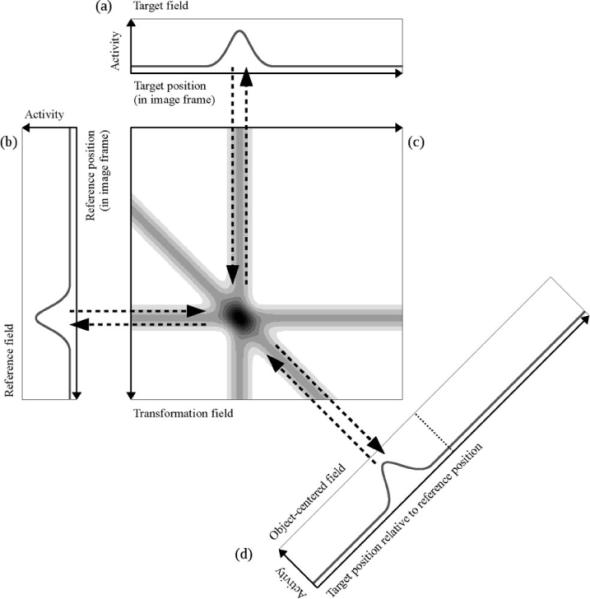Figure 3.

Reference frame transformation for one-dimensional inputs through a two-dimensional transformation field. The target field (a) and the reference field (b) represent object position in the image frame. The transformation field (c) is defined over the space of all combinations of target and reference position and it links the target and reference field with the object-centered field (d). The activity distribution within the transformation field is indicated by different shades of gray, with darker shades meaning higher activity. The target field is aligned with the horizontal target position axis of the transformation field. The reference field is aligned with the vertical reference position axis (this axis is inverted for reasons of visualization). The object-centered field is shown tilted by 45°. All projections between a one-dimensional field and the transformation field run orthogonally to the position axis of the respective one-dimensional field (bidirectional dashed arrows). The inputs from the three one-dimensional fields produce the three visible activity ridges in the transformation field. The output from the intersection point of these ridges projects back to the peak positions in the one-dimensional fields. The diagonal projection to the object-centered field connects all combinations of target and reference position to the matching relative position in the object-centered field. The dotted line in the object-centered field represents the center of this field, which is by definition aligned with the reference object.
